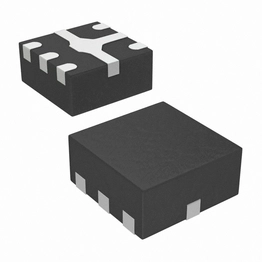RF & Wireless ICs
RF and Wireless Definition:
Radio Frequency (RF) and wireless technologies refer to the use of electromagnetic waves to transmit information over distances without the need for physical connections like cables or wires. RF is a subset of the electromagnetic spectrum that covers frequencies ranging from about 3 kHz to 300 GHz, which includes the frequencies used for wireless communication.
Function:
1. Data Transmission: Wireless technologies enable the transfer of data between devices, such as computers, smartphones, and IoT devices, over airwaves.
2. Communication: They facilitate voice, video, and data communication across various platforms and networks.
3. Networking: Wireless networks, like Wi-Fi and Bluetooth, allow multiple devices to connect and communicate within a defined area.
4. Remote Sensing: RF is used in applications like radar and communication for remote sensing and tracking.
5. Control and : Wireless systems are used for remote control and in industrial, medical, and home automation applications.
Applications:
1. Telecommunications: Mobile phones, communications, and internet services.
2. Networking: Wi-Fi, Bluetooth, and Zigbee for local area networking and device connectivity.
3. Consumer Electronics: Wireless headphones, remote controls, and smart home devices.
4. Automotive: Keyless entry systems, tire pressure , and vehicle-to-vehicle communication.
5. Industrial: RFID for asset tracking, wireless sensors for equipment, and remote control of machinery.
6. Medical: Telemedicine, wireless patient , and remote surgical tools.
Selection Criteria:
1. Frequency Band: The specific frequency band determines the range, interference, and regulatory compliance.
2. Range and Coverage: The distance over which the signal can be effectively transmitted.
3. Data Rate: The speed at which data can be transmitted, which affects the performance of applications.
4. Power Consumption: Important for battery-operated devices and energy efficiency.
5. Interference Resistance: The ability to operate reliably in environments with potential signal interference.
6. Security: The level of encryption and security measures to protect data integrity and privacy.
7. Cost: The affordability of the wireless technology in relation to its performance and reliability.
8. Regulatory Compliance: Adherence to local and international regulations and standards for wireless communication.
9. Scalability: The ability to expand the network or system as the number of devices or data volume increases.
10. Compatibility: Ensuring the technology works with existing infrastructure and other devices.
When selecting RF and wireless solutions, it's crucial to consider these criteria to ensure that the chosen technology meets the specific needs of the application while providing reliable and efficient performance.
Please refer to the product rule book for details.
Radio Frequency (RF) and wireless technologies refer to the use of electromagnetic waves to transmit information over distances without the need for physical connections like cables or wires. RF is a subset of the electromagnetic spectrum that covers frequencies ranging from about 3 kHz to 300 GHz, which includes the frequencies used for wireless communication.
Function:
1. Data Transmission: Wireless technologies enable the transfer of data between devices, such as computers, smartphones, and IoT devices, over airwaves.
2. Communication: They facilitate voice, video, and data communication across various platforms and networks.
3. Networking: Wireless networks, like Wi-Fi and Bluetooth, allow multiple devices to connect and communicate within a defined area.
4. Remote Sensing: RF is used in applications like radar and communication for remote sensing and tracking.
5. Control and : Wireless systems are used for remote control and in industrial, medical, and home automation applications.
Applications:
1. Telecommunications: Mobile phones, communications, and internet services.
2. Networking: Wi-Fi, Bluetooth, and Zigbee for local area networking and device connectivity.
3. Consumer Electronics: Wireless headphones, remote controls, and smart home devices.
4. Automotive: Keyless entry systems, tire pressure , and vehicle-to-vehicle communication.
5. Industrial: RFID for asset tracking, wireless sensors for equipment, and remote control of machinery.
6. Medical: Telemedicine, wireless patient , and remote surgical tools.
Selection Criteria:
1. Frequency Band: The specific frequency band determines the range, interference, and regulatory compliance.
2. Range and Coverage: The distance over which the signal can be effectively transmitted.
3. Data Rate: The speed at which data can be transmitted, which affects the performance of applications.
4. Power Consumption: Important for battery-operated devices and energy efficiency.
5. Interference Resistance: The ability to operate reliably in environments with potential signal interference.
6. Security: The level of encryption and security measures to protect data integrity and privacy.
7. Cost: The affordability of the wireless technology in relation to its performance and reliability.
8. Regulatory Compliance: Adherence to local and international regulations and standards for wireless communication.
9. Scalability: The ability to expand the network or system as the number of devices or data volume increases.
10. Compatibility: Ensuring the technology works with existing infrastructure and other devices.
When selecting RF and wireless solutions, it's crucial to consider these criteria to ensure that the chosen technology meets the specific needs of the application while providing reliable and efficient performance.
Please refer to the product rule book for details.
Categories
Datasheets
AD9364BBCZ Datasheet
SKY13323-378LF Datasheet
PHA-1+ Datasheet
DPX165850DT-8085D3 Datasheet
GALI-74+ Datasheet
NRF52832-QFAA-R Datasheet
F4804A-RG Datasheet
NRF52840-CKAA-F-R Datasheet
LEA-F9T-10B Datasheet
ADRV9009BBCZ Datasheet
ANT-433-CW-QW Datasheet
LMS7002M Datasheet
ANT-433-CW-QW Datasheet
ESP-32 Datasheet
HMC595AE Datasheet
Article

What Is a Potential Transformer (PT)?
Table of Contents + 1. Basic Definition & Background 1.1. What Is a Potential Transformer? 1.2. PT vs Ordinary Transformer vs Instrument Transformer 1.3. Applications of Potential Transformers / What Are Potential Transformers Used For?2. Operation Principle 2.1. Working Principle of a PT / VT 2.2. Voltage Ratio & Turn Ratio Relationship 2.3....
Learn More >
ICkey Named Intel IoT Solution Aggregator, Marking Strategic Milestone in Partnership
ICkey, a leading distributor of electronic components and provider of digital supply chain solutions, has entered into a strategic partnership with global semiconductor giant Intel, becoming an official Intel IoT Solution Aggregator. To commemorate this milestone, the two companies held a signing ceremony under the theme “Smart Connectivity, Powering the Future.” During the ceremony, Bi Fenglei, Senior ...
Learn More >

ICkey Successfully Lists on Shenzhen Stock Exchange ChiNext Board, Empowering Innovation in the Electronics Industry
On September 30, 2025, ICkey (Shanghai) Internet & Technology Co., Ltd. (ICkey) announced its successful listing on the ChiNext Board of the Shenzhen Stock Exchange under the stock code 301563. As a leading vertical B2B supply chain platform in the electronic components sector, ICkey supports the R&D, production, and procurement needs of the electronics manufacturing industry - specifically targeting small and medium-b...
Learn More >





_1755239856191.jpg)







_1755239759577.jpg)
























